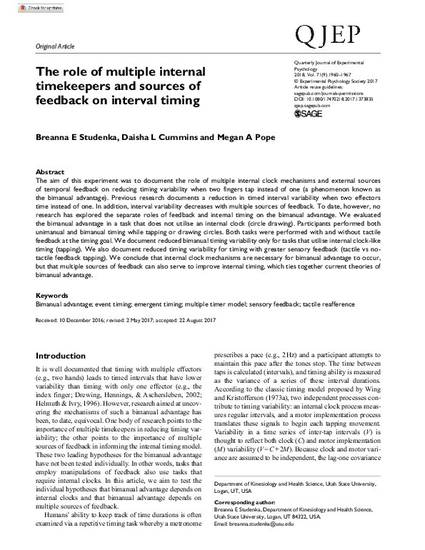
The aim of this experiment was to document the role of multiple internal clock mechanisms and external sources of temporal feedback on reducing timing variability when two fingers tap instead of one (a phenomenon known as the bimanual advantage). Previous research documents a reduction in timed interval variability when two effectors time instead of one. In addition, interval variability decreases with multiple sources of feedback. To date, however, no research has explored the separate roles of feedback and internal timing on the bimanual advantage. We evaluated the bimanual advantage in a task that does not utilise an internal clock (circle drawing). Participants performed both unimanual and bimanual timing while tapping or drawing circles. Both tasks were performed with and without tactile feedback at the timing goal. We document reduced bimanual timing variability only for tasks that utilise internal clock-like timing (tapping). We also document reduced timing variability for timing with greater sensory feedback (tactile vs no-tactile feedback tapping). We conclude that internal clock mechanisms are necessary for bimanual advantage to occur, but that multiple sources of feedback can also serve to improve internal timing, which ties together current theories of bimanual advantage.
